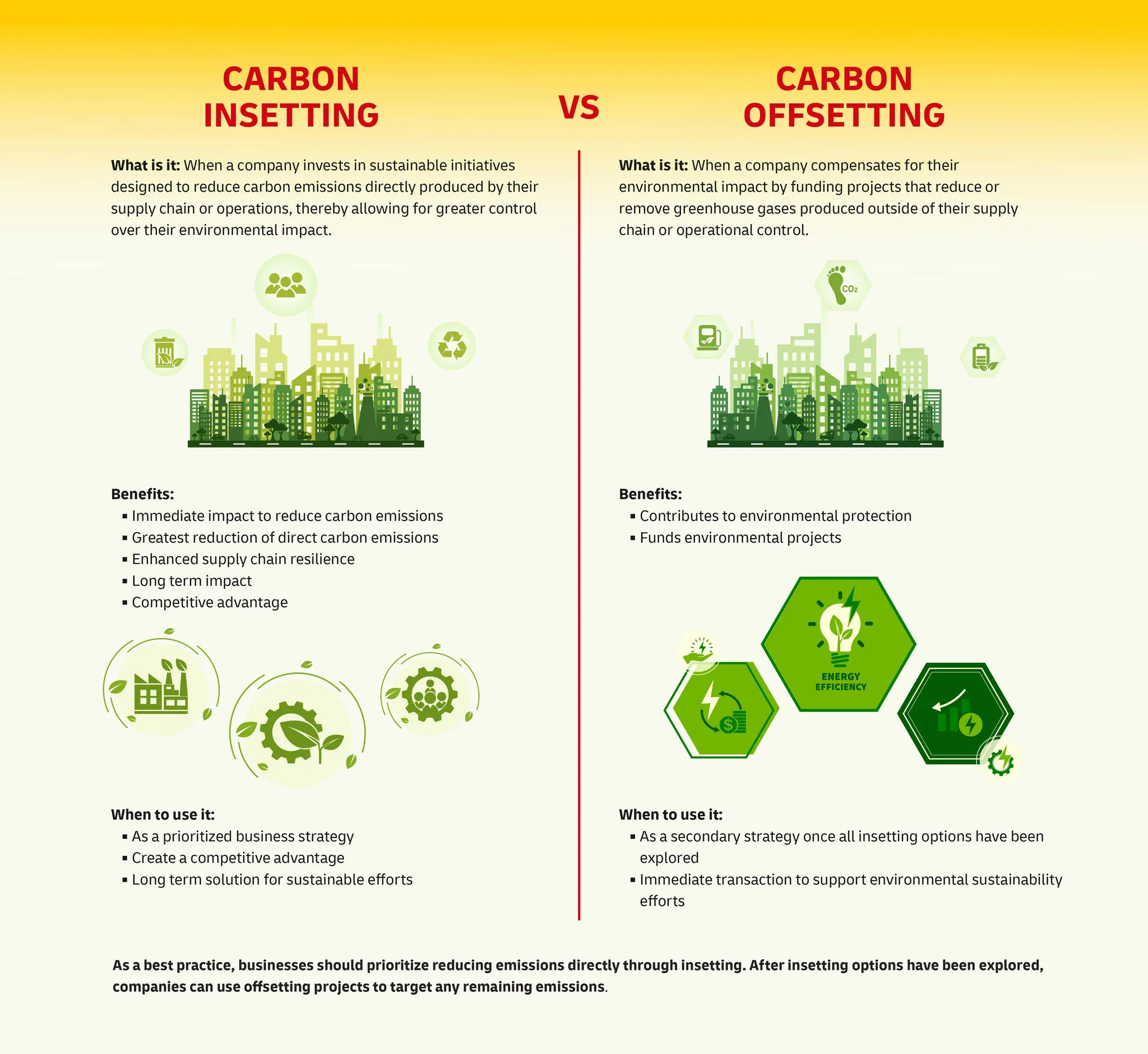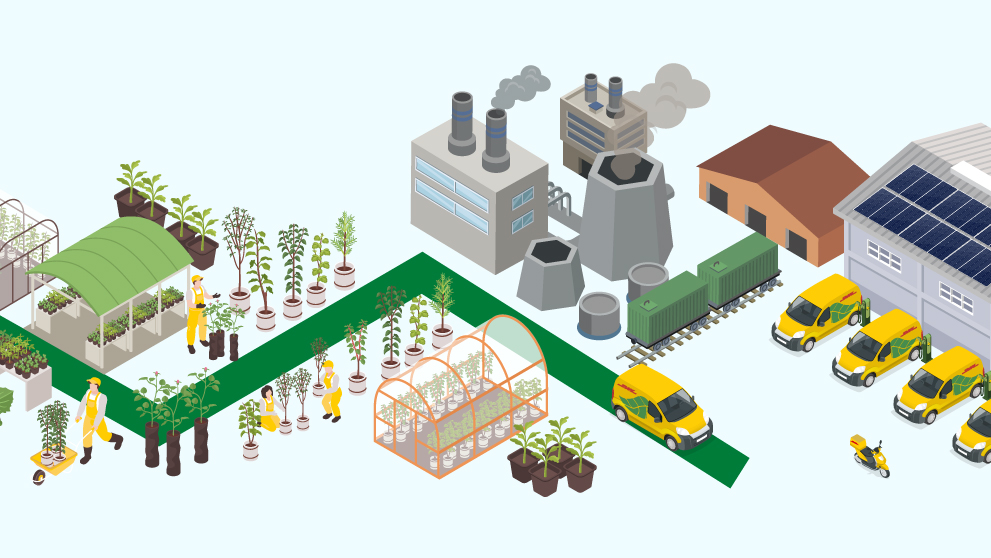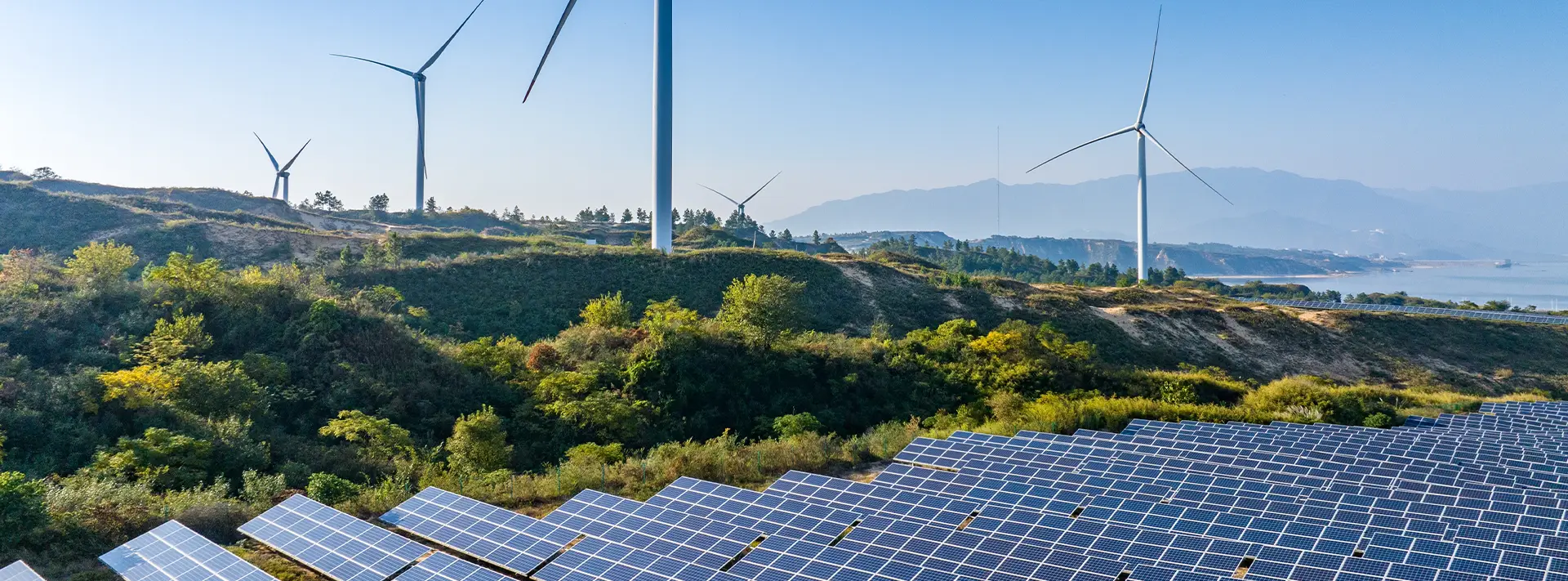What You Should Know About Carbon Emissions Reduction
In the face of growing environmental challenges, discovering the best ways to manage your company’s carbon emissions is essential to creating a more sustainable future. As you prioritize sustainable business practices and look for the right strategies to decrease your carbon footprint, it’s important to understand the two leading approaches: carbon offsetting and insetting. This article explains what these strategies are, gives insights into how they’re being put into practice, walks through their benefits and real-life applications, and introduces GoGreen Plus as an industry-leading, innovative insetting solution.
What is Carbon Offsetting?
Carbon offsetting is an approach where businesses, governments, or individuals fund projects outside of their operations to help reduce or remove greenhouse gases from the atmosphere. By using carbon offsetting strategies, your business can essentially purchase carbon credits associated with projects that have verifiably reduced or removed greenhouse gases. This practice allows you to offset the emissions produced by your business.
Offset projects vary widely, covering a range of activities designed to reduce future emissions or capture existing CO2 from the atmosphere. These include reforestation and afforestation efforts, where trees are planted to absorb carbon. It can also include methane capture projects at landfills or agricultural sites, or clean cookstove programs in developing regions to reduce harmful emissions. Additionally, renewable energy projects, such as wind farms, help replace fossil-fuel-based power generation with clean, sustainable energy sources.
Even so, carbon offsetting comes with some significant downsides and has come under criticism. Offsetting projects can take years to build and deploy, and critics argue that it can serve as a convenient loophole, allowing companies to claim they are addressing their emissions without making substantial changes to their own operations. Additionally, the effectiveness of many offsetting projects is often questioned, with concerns about the actual long-lasting impact of the emissions reductions they claim to achieve. According to an extensive study by the Guardian and German publication Die Zeit, 90% of rainforest carbon offsets are not useful and could make global warming worse.
What is Carbon Insetting?
In contrast, carbon insetting is a way to implement emission reduction strategies within your company's operations. This strategy aims to reduce emissions by addressing the emissions directly related to your company's activities and targeting the root of the problem. Insetting can involve projects that improve the energy efficiency of your company’s manufacturing and transportation activities, such as adopting electric vehicles, utilizing renewable energy, and incorporating biofuels. Additionally, it can also involve sourcing sustainable materials for packaging to further reduce emissions from purchased goods and services.
Key Differences Between Offsetting and Insetting
While both approaches try to reduce carbon footprints, their application and impact differ significantly. Insetting focuses on long-term sustainability by integrating emissions reduction into the core strategy of your business. This approach directly addresses emissions within your company's own operations and supply chain. Because it doesn’t directly address the root of the problem, offsetting should only be considered after all insetting solutions have been exhausted, or for addressing emissions that can't be immediately reduced through operational changes.
The choice between offsetting and insetting depends on specific circumstances, such as the nature of your business, available resources, and sustainability goals. However, insetting often yields more substantial benefits by promoting systemic changes and enhancing the environmental and social value chain. It offers a more holistic approach to sustainability, creating deeper engagement with stakeholders and creating lasting positive impacts on both the environment and the business. Therefore, companies should prioritize insetting as a more reliable and impactful strategy for reducing their carbon footprint.

Benefits of Carbon Insetting For Your Business
Now that you know the key differences between insetting and offsetting, let’s review the benefits of prioritizing insetting for your business.
Achieving Direct Emission Reductions
Insetting drives direct emission reductions by integrating sustainable transportation, powered by renewable energy, biofuels, and sustainable sourcing, into your operations.
- By adopting this strategy, your business can significantly lower its carbon footprint, improve energy efficiency, and reduce reliance on fossil fuels throughout its supply chain, resulting in meaningful and sustainable emissions reductions.
Improving Operational Efficiency
A diverse mix of energy and material source use can make your business operate more efficiently and lead to stronger relationships with suppliers and stakeholders. This lets you respond more quickly to challenges or disruptions.
A more sustainable and resilient supply chain is better able to deal with changes in resource availability and adapt to shifting market demands.
Drives Innovation
Insetting delivers greater benefits by fostering systemic changes and strengthening the environmental and social value chain.
It drives innovation and adaptability by allowing your company to develop new products and services to bring to market.
Sourcing sustainable materials, for example, can allow you to develop eco-friendly products or services that align with your sustainability goals and create new demand from customers.
Provides a Competitive Advantage
Embedding sustainability into your brand helps differentiate your products or services in the market.
It also allows you to promote emissions reduction efforts externally, attracting environmentally-conscious consumers.
These benefits make it clear why prioritizing insetting matters. By making insetting the focus of your emissions reduction efforts, we can achieve a long-term, resilient supply chain that addresses carbon emissions and ensures the long-term sustainability of your business.
Next Steps to Go Green
Get more information about how to create sustainable business practices by connecting with our Certified International Specialists.




